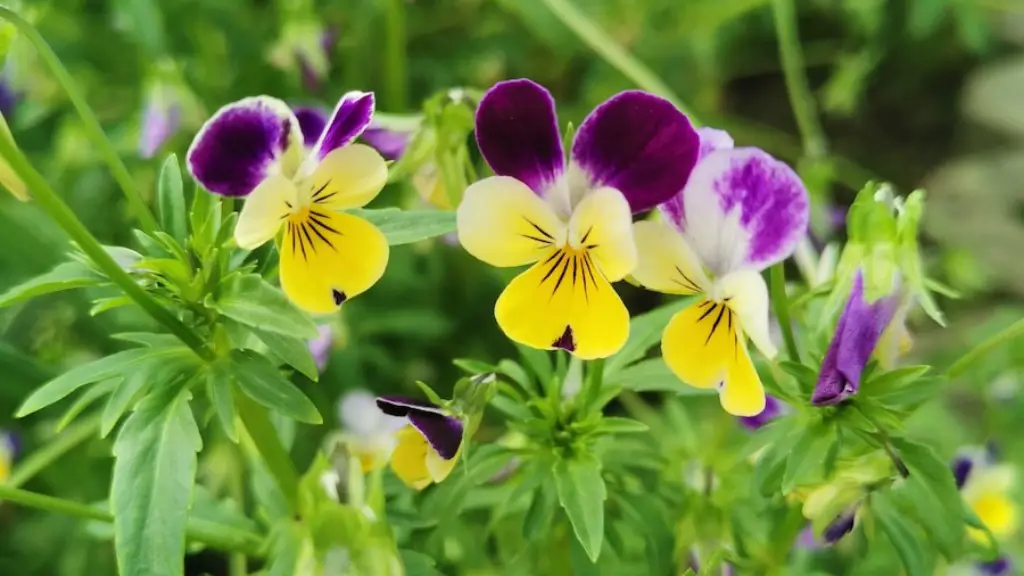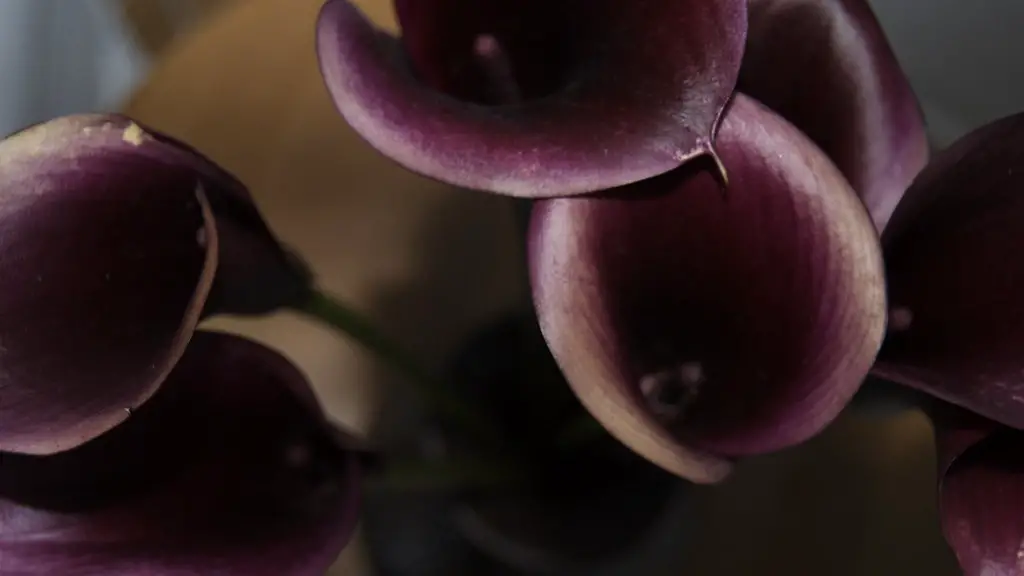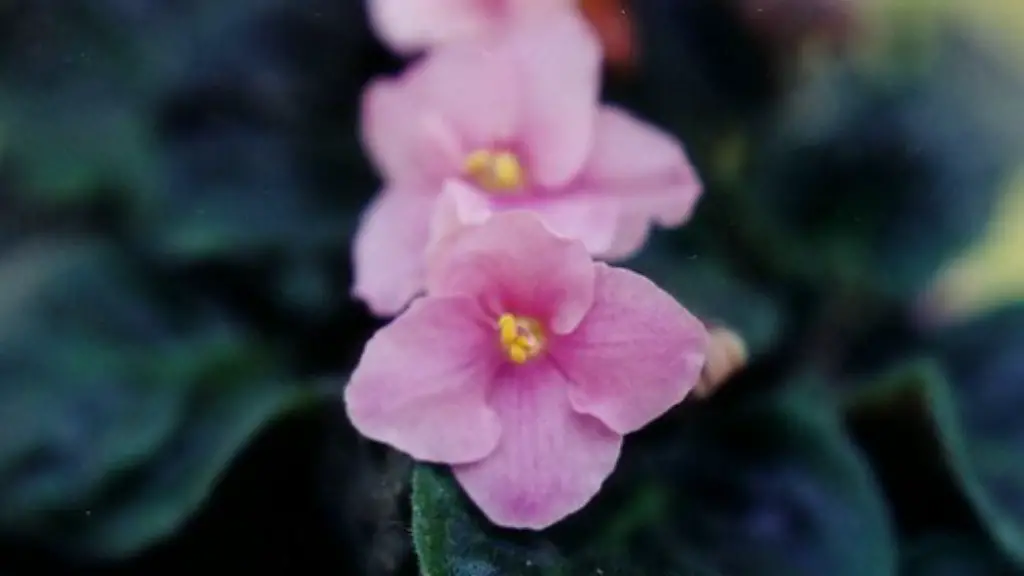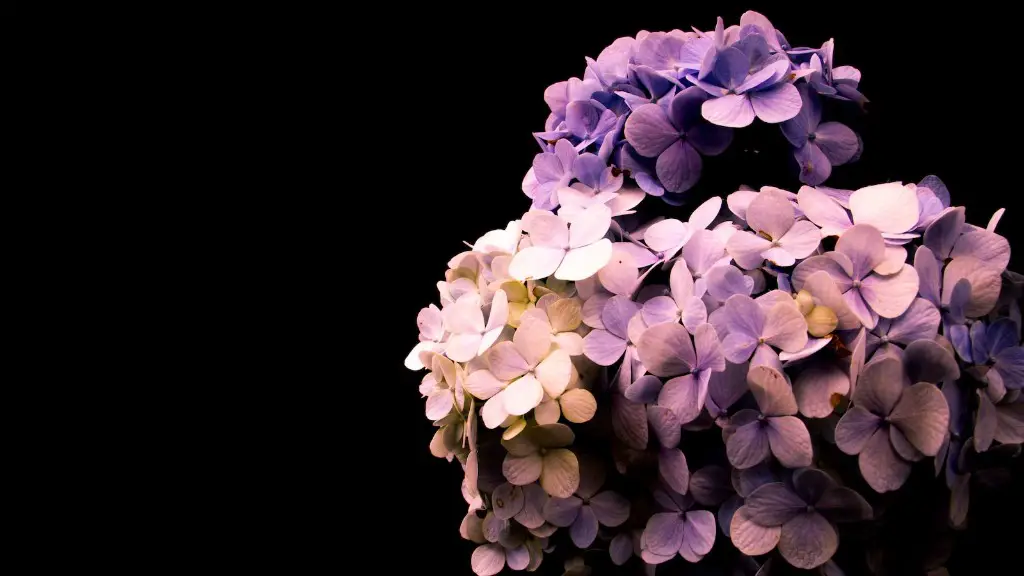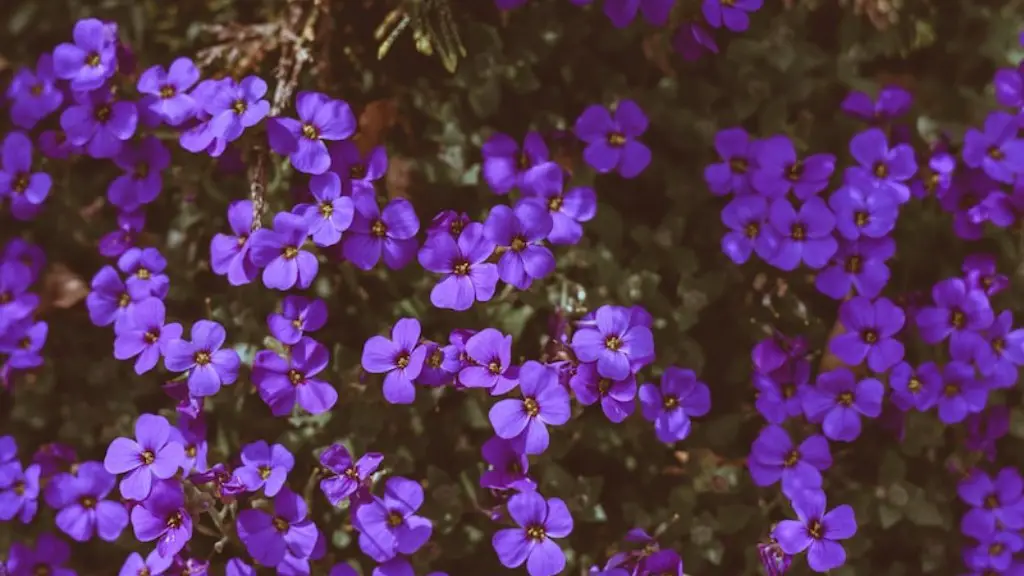It is generally recommended to repot African violets every 12 to 18 months. This allows the plant to continue growing and stay healthy by replenishing the potting mix and removing any accumulated salts.
African violets should be repotted every 12 to 18 months.
Do African violets like to be crowded?
It can be a bit of a challenge to find the perfect balance for African violets when it comes to above and below ground crowding. Too many leaves can cause the plant to withhold its beautiful blooms, or even stop growing altogether. However, a bit of crowding can actually be beneficial for the plant, providing it with the support it needs to thrive. Ultimately, it is important to pay close attention to your African violet and make sure it has the space it needs to grow and bloom to its fullest potential.
If you need to repot your African violet, it’s best to wait until it’s not actively blooming. This will minimize stress on the plant and help it to adjust to its new pot more easily. However, if the plant is root-bound or at risk of toppling over, it’s okay to repot while it’s flowering.
Do African violets need small pots
If you’re looking to get your African violet plant to bloom, you’ll want to make sure you’re not using a pot that’s too big. African violets do best when they’re slightly pot-bound, so choose a pot that’s on the smaller side. A professional tip is to use a pot that’s 3-4 inches in diameter if you have a standard African violet plant.
African Violet roots don’t go very deep; they like to go sideways, so don’t use a deep pot. Your pot must have suitable drainage holes so you can water from underneath. You can also get African Violet specific pots that have a terra cotta sleeve you plant in, and a water reservoir.
Should African violets be watered from the top or bottom?
African violets need to have their roots aerated in order to stay healthy. This means that you should keep the soil moist, but never soggy. Watering from the bottom will help to keep water out of the crown of the plant. African violets like warmer water, around 70 degrees.
African violets need bright, indirect light in order to thrive. A site near an east or north window is often a good location for them, as they need to be protected from direct sunlight. If a suitable window isn’t available, African violets can be placed under a fluorescent light fixture containing two 40-watt fluorescent tubes.
What is the lifespan of an African violet?
African violets can make great long-term houseplants, as they can live for up to 50 years with proper care! One important aspect of taking care of an African violet is repotting them as needed – the trick is knowing when to repot, and what size container and type of soil to use. With a little attention, your African violet can thrive for many years to come!
African violets are best suited for growing in small, self-watering ceramic or plastic pots. These pots help to provide the proper amount of moisture to the plants, and prevent the plants from becoming too dry.
What is the secret to African violets
If your African violet is not blooming, the most common reason is that it is not getting enough light. African violets need indirect sunlight; direct sunlight can burn the leaves. Choose a north- or east- facing window for the best results. Keep plants away from cold glass and rotate the pot once a week so that all leaves receive light.
The repotting is done so now we need to water them in and the best way to do that is to submerge the plant pots in a bucket or sink of water for about 20 minutes. This allows the water to saturate the potting mix and get all the way to the roots of the plant.
Do violets like to be root bound?
African violets prefer to be root-bound in order to bloom well. It is good practice to periodically repot houseplants because the soil should be refreshed periodically. You can often repot the plant into the same pot after cleaning it well, using fresh potting mix.
It is important not to use cold water; lukewarm or warm is preferred. If you water from the top, be careful not to get water on the leaves when the plant is in the sun; this is to avoid leaf spots.
What size pots do African violets like
Are you wondering what size of pots you should be planting your African violets in? I have a little tip for you! The size of the pot you use should be proportional to the size of the plant. So, if you have a small plant, use a small pot, and if you have a large plant, use a large pot. This will help your plant to stay healthy and avoid getting rootbound.
It is important to water your African Violet when the soil mix feels bone dry. You can check the soil mix by lightly pushing down with your finger. If the mix feels moist, you can wait a few days before watering your African Violet.
Can I use regular potting soil for African violets?
African violets need special soil because they are very sensitive. A lightweight, soilless planting medium provides support without crushing or choking their delicate root systems.
If you water your African violet from the bottom (allowing the plant to sit in a saucer of water for a few minutes) be sure to empty the saucer afterwards and do not mist the foliage. Water on the foliage may cause permanent leaf spotting. Use water that is room temperature. African violets are susceptible to crown rot, so it is important that the crown (the section of the plant at soil level) is not saturated with water.
Conclusion
African violets need to be repotted when they outgrow their current pot or when the potting mix becomes compacted and starts to inhibit drainage.
When repotting African violets, it is best to wait until the plant is pot-bound, meaning that the roots have filled the pot and there is no room for further growth. This usually occurs every 12-18 months. If the plant is not pot-bound, there is no need to repot it.
